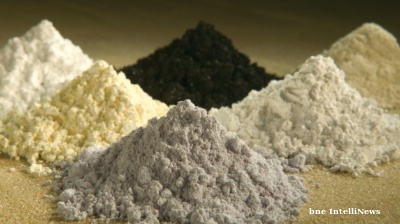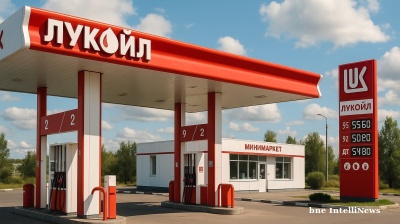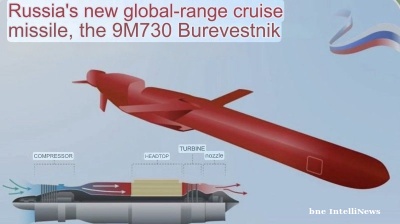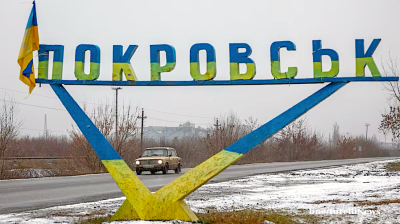Russian President Vladimir Putin has made clear that he believes Ukrainians and Russians are “one people,” and his objective is to return Ukraine to Russkiy Mir, the “Russian World.” Will he achieve his objective by further invasion of Ukraine (Russia first invaded Ukraine seven and half years ago), or continuing doing what he’s been doing for at least the past 17 years since the 2004/2005 Orange Revolution, with some success, which is to drive a wedge between Ukraine and the West, to the point where the West might simply give up on integrating Ukraine into “Euro-Atlantic” architecture, with the result that Ukraine would fall back into “Russkiy Mir” on its own, without further Russian military intervention?
Former US Defence Secretary Robert Gates describes Putin as a “master of the long game.” If Gates is right, then it’s likely that Putin will continue to do what he's been doing for the past 17 years. Ukrainians must be careful not to “help” Putin, through poor policy choices, the current “Wagnergate Scandal” discussed in detail later being one example, and lack of unity among Ukraine’s political leadership.
However, in either case, invasion or continuing doing what he’s been doing, there may be a point where Putin will realize what has been obvious since at least 2014, that Ukraine has divorced itself from Russia, built up its institutions, both government and non-government, and has moved irretrievably toward the West. For Ukraine, there is now no going back to “Russkiy Mir.” Putin’s realization may take many years, and perhaps he may die first or be removed from office but, regardless of Ukraine’s shortcomings, in fighting corruption, lack of cooperation between political factions and other factors, Ukraine will not return to “Russkiy Mir.”
Invade
To better understand each alternative, it is best to consider what a Russian invasion of Ukraine might look like, and the likelihood that an invasion would achieve Putin’s objective.
The best analysis I have seen, describing what a Russian invasion of Ukraine might look like, can be found in this long article in the current issue of “bne Intellinews.”
The analysis starts with the following 3 assumptions: Russia would use all the 92,000 troops currently deployed near Ukraine; tactical air superiority would be achieved within 2 days; tactical intelligence from the US, from satellites, AWACS aircraft and other sources would be of little use in stopping the invasion; Russia could occupy Ukraine east of the Dnieper River within 2 months. The analysis then goes on to state that Russia would need at least 300,000 troops, or almost 50% of its active-duty armed forces, to complete the occupation of all of Ukraine (if it chose to do so).
The analysis overlooks some important factors:
Is 300,000 Russian troops enough? In 2014/15, there was much speculation that Russia would make an incursion along the north coast of the Sea of Azov, to secure a “land bridge” of approximately 250 km, between Russia and newly occupied Crimea. At that time, the experts stated that Russia would need 250,000 troops, simply to control this small portion of Ukrainian territory.
Support of the local populace east of the Dnieper River. The article states that the population east of the Dnieper River is mostly ethnic Russian, suggesting that they would support the invaders. That is a very doubtful assumption. In the Spring of 2014 Russia assumed that the populations of Kharkiv, Ukraine’s 2nd largest city, and Odessa, Ukraine’s primary metropolitan area on the Black Sea, would welcome Russian annexation and, therefore, there was no need to invade. It turned out that Russia was wrong. The populations of these cities, and surrounding areas, stayed loyal to Ukraine.
Partisans. The analysis implies that partisans would only become a problem for Russian invaders if Russia chose to occupy the entire country, including Western Ukraine where they would be opposed by committed Ukrainian nationalists, likely supplied by NATO countries lying just across the border. In fact, partisans will be a problem for Russian invaders throughout the entire country. One of the reasons that experts said that it would take 250,000 Russian troops to control the land bridge was because of groups of partisans, especially operating within the cities of Mariupol and Berdyansk both located inside the land bridge.
Possible “Frozen Conflict in Reverse.” As the analysis points out, if Russia chose to invade all of Ukraine, for the first time since 1945 Russia would be directly facing NATO forces across Ukraine’s western border. NATO would be able to directly supply Ukrainian resistance fighters operating inside Ukraine. If resistance fighters were able to set up a Ukrainian statelet, that entity would be pointed at Russia, as opposed to existing frozen conflicts in Donbas, Transnistria, S. Ossetia, and Abkhazia, all occupied by Russian troops with intent to destabilize Ukraine, Moldova, and Georgia, respectively.
The analysis does mention several factors that would work against Russia and the invaders, including:
Re-invigoration of NATO. The fact that Russia would, if it invaded all of Ukraine, would directly facing NATO troops, not just in Europe, but also in Turkey. As the analysis states, this would almost certainly result in major increases in NATO forward deployments from Bulgaria in the south to the Baltic States in the north. Substantial increases in the defence budgets of NATO members, above the current agreed-upon 2% of GDP, would almost certainly ensue.
Turkey. Turkey, a NATO Member, and Ukraine are increasing their defence cooperation. The analysis states that it is unclear what Turkey would do in the event of a Russian invasion of Ukraine, but their navy could be in the position to interrupt Russian naval operations against Ukraine in the Black Sea.
The huge cost of taking on Ukraine as a part of Russia, including pensions, reconstruction, public salaries, etc. The cost to Russia in Crimea is substantial, let alone the rest of Ukraine.
The Carpathians. The Carpathian Mountains, in western Ukraine, is similar to the landscape of much of West Virginia, mountains divided by valleys with limited access. After the end of WW-II, Ukrainian resistance fighters operating in the Carpathians held out against the Soviet Army until 1949, without any direct source of supply from the West.
The analysis ends with this conclusion, “If the strategy (Russian invasion) has backfired, it will have yielded one small but useful result. Ukrainians will have looked carefully at whether they have the men, material, money and mates to withstand a Russian invasion, and will have come to the same conclusion argued here – that resistance is futile. That realization is a useful step towards a reluctant but popular future federation with Russia, which was President Putin’s overriding objective from the beginning.” Ukraine has left Russkiy Mir for good. How, when, and especially if, Putin comes to the realization, is the ultimate destabilizing factor.
Doing What He’s Been Doing
So far, Putin has been successful in keeping Ukraine out of Western institutions, especially the EU and NATO, by a combination of malign influencing, threats including the one playing out now, a partial invasion, and by Ukraine’s own mistakes in areas such as reforming the judiciary and improving property rights. How long is Putin willing to keep doing what he’s been doing, and what is the end game? An example of Putin being able to take advantage of events inside Ukraine is “Wagnergate,” a major mistake that wasn’t.
“Wagnergate” is named after the Wagner Group, Russia’s answer to Blackwater in the US, with a nod to the Watergate Scandal that brought down former US President Richard Nixon. Wagner has operated in Syria, Libya, and the Central African Republic, as well as occupied Donbass, places where Russia required “plausible deniability” for its own presence.
The Wagnergate operation is described in a detailed report produced by the organization Bellingcat, that uses only open source data in its work. Bellingcat’s credits include the following: Proof that the BUK missile battery that shot down MH-17 was transported from a base inside Russia, returning there after the shoot-down; establishing the identities of the Russian GRU officers who poisoned the Skripals; establishing the identities of the Russian individuals who followed Alexei Navalny and eventually poisoned him; an operation conducted with Navalny to get one of the individuals to admit his role in the poisoning.
According to Bellingcat, in 2018 Ukrainian military intelligence, called GUR MOU, devised a “false flag” operation, to lure 33 individuals who had operated in Donbass, either with Wagner or with Russian-sponsored volunteer corps, into a mass rendition where they would end up under arrest in Ukraine. It is almost certain that the fact the operation didn’t take place as planned, meant that Ukraine has avoided substantial damage to its reputation and national security, and thus constitute a major victory for Russia.
As the Bellingcat Report shows, GUR MOU was brilliant in learning how Wagner operated and, using that information, developing a false flag operation that deceived 33 veteran fighters to reveal their identities, and enroll in the operation. Hopefully this knowledge will serve to raise the risks to Wagner, and to Russia, in future operations.
However, according to Bellingcat, the actual rendition, originally supposed to take place on July 15 2020, involved inducing a Turkish Airlines commercial jet flying from Minsk to Istanbul to make an emergency landing in Kyiv, where the 33 individuals would be taken into custody. After a delay of several days, the 33 individuals never got on the plane. Instead, they were taken into custody in Minsk by Belarus State Security, and they were eventually returned to Russia.
Many things could’ve gone wrong during the rendition, possibly leading to extremely adverse national security consequences for Ukraine, and a major victory for Russia:
According to Bellingcat, at the suggestion of Andriy Yermak, the Head of the Office of the President, the operation was delayed for a week, ostensibly so as not to conflict with a press conference Pres. Zelenskiy was having the day before the original date of the operation, announcing a ceasefire between Ukraine, Russia, and the Donbass Separatists. The delay would’ve resulted in the 33 individuals coming to Kyiv in 2 separate flights, one day apart, instead of one flight. What would’ve happened to the 2nd of the 2 flights, both on Turkish Airlines, after news broke on what happened to the first flight?
The risk of a disturbance at the Kyiv Airport, when the individuals determine what had happened to them?
By the time of the 1st flight, Russia may have figured out that the operation was a fake. The Russians could’ve diverted either flight, taking all the passengers hostage including the 33 individuals targeted for rendition by Ukraine.
What would the use, or misuse, of 2 Turkish Airlines commercial aircraft have done to the growing military relationship with Ukraine and Turkey? What would’ve happened to Ukraine’s relationship with Europe and the US?
The risks of something going wrong with this operation seem to substantially outweigh whatever benefits Ukraine would get from the rendition of the 33 individuals.
Perhaps a better solution, suggested by a friend of mine who was an officer in the Soviet Army, would’ve been to keep the achievements of the GUR MOU secret, so Russia would be unaware that Wagner’s methods of operation and recruitment had been compromised, and then Ukraine submit their names for imposition of Magnitsky sanctions. Ukraine could also, at a time of its choosing, liquidate the 33 individuals, one by one. This is exactly what Israel’s Mossad did, when they identified the individuals involved in the murder of the Israeli athletes at the 1972 Munich Olympics.
There are allegations whether someone in the Ukraine Presidential Administration gave up the operation to the Russians. There have been protests outside the Presidential Administration Building, calling for Yermak to resign. Regardless of the truth to the allegation, it takes away from the achievements of GUR MOU, and it ignores the adverse consequences to Ukraine had the rendition gone wrong. This type of discord can only help the Russians. Perhaps the protestors should be thankful that the rendition never took place.
The talk of a Russian invasion has, according to Ukraine Financial News, affected Ukraine’s economy in the following ways:
Over the last two months, the price of Ukraine’s GDP warrants, tied to projected growth in Ukraine’s GDP, has dropped by 24%, to 88 cents today, from 116 cents in mid-September. Most of the drop took place in the last two weeks, according to Bloomberg.
As of today, the National Bank of Ukraine’s exchange rate is UAH26.86 to the US dollar -- a 3% devaluation over the last two weeks. Despite the upcoming injection of $699mn of IMF money, the hryvnia is being undermined by war jitters and non-residents leaving the government bonds.
The Finance Ministry raised $165mn in hryvnia through the sale of government bonds yesterday, barely half the auction volume of the previous week, the Ministry reported on Facebook. Of the seven issues offered, 75% of purchases were for 6-month bonds, which carried an average yield of 10.55%. There were no takers for the longest dated bonds – 5-years.
Russia has achieved this without firing a shot.
Russia is also benefiting from Ukraine’s domestic problems, including Ukraine’s continuing problems in dealing with Covid1-9, almost certainly aided and abetted by malign Russian propaganda, the continuing inability of Ukraine’s reformers to cooperate, a problem going back several years with the result that reformist parties never achieve real power in Parliament or in the Administration, continuing high-level corruption in the government and within major industries. Putin could well conclude that the longer these self-inflicted problems continue, the more likely it will be that Europe and the US will relax their support for Ukraine, with the result being Ukraine falling back into Russkiy Mir without the need for a Russian invasion.
For Putin Ukraine’s current problems, with energy, Covid-19, continuing corruption, and other factors, likely obscures the progress Ukraine has made since its independence, possibly leading him to think that Ukraine will fall back into Russkiy Mir under its own weight. The nature of Ukraine’s economy is changing, in ways that would not be possible in Russkiy Mir. Today, the new “Kyiv Independent” reported that Max Lytvyn and Alex Shevchenko, Co-Founders of Grammarly, have become billionaires because of the valuation that Grammarly received in its latest funding round. Lytvyn and Shevchenko are the first Ukrainian billionaires who are not considered to be oligarchs. This would’ve never happened if Ukraine had become part of Russkiy Mir. Reporters from the shuttered Kyiv Post recently founded the Kyiv Independent (kyivindependent@gmail.com).
Putin has never understood the progress Ukraine has made. We can only hope that Putin’s ignorance of events in Ukraine won’t end up in him making a miscalculation.
As long as Putin is President of Russia, Russia will not relax its pressure on Ukraine. I doubt that Putin is capable of concluding that Ukraine is “gone,” and won’t come back to Russkiy Mir.
Robert Homans is an international financial sector consultant based in Washington DC and tweets at @rhomansjr
Opinion
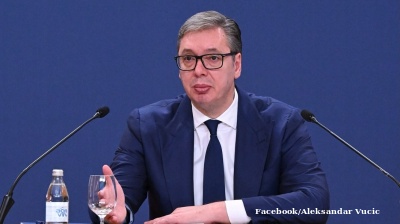
A year after the Novi Sad disaster, Belgrade faces one crisis after another
Serbia’s government is grappling with a convergence of crises which threaten to erode President Aleksandar Vucic’s once-dominant position.
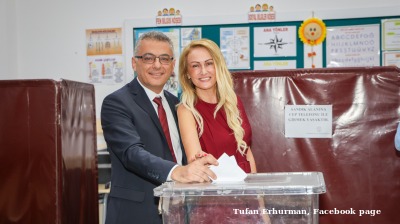
Don’t be fooled, Northern Cyprus’ new president is no opponent of Erdogan, says academic
Turkey’s powers-that-be said to have anticipated that Tufan Erhurman will pose no major threat.
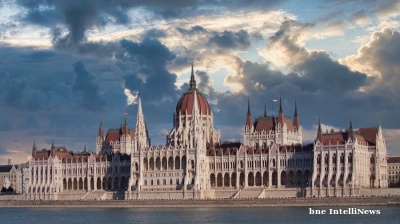
COMMENT: Hungary’s investment slump shows signs of bottoming, but EU tensions still cast a long shadow
Hungary’s economy has fallen behind its Central European peers in recent years, and the root of this underperformance lies in a sharp and protracted collapse in investment. But a possible change of government next year could change things.
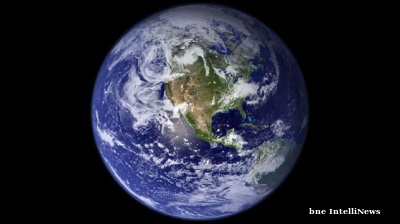
IMF: Global economic outlook shows modest change amid policy shifts and complex forces
Dialing down uncertainty, reducing vulnerabilities, and investing in innovation can help deliver durable economic gains.
